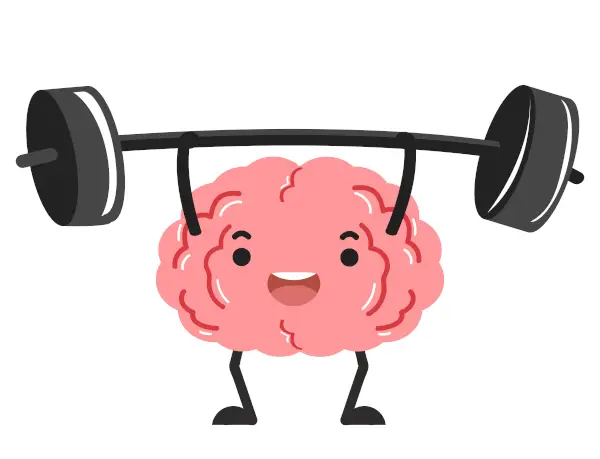Welcome to the journey of meditation, where the mind wanders as freely as the wind. If you’ve ever found yourself lost in thought during meditation, you’re not alone. The path to inner peace is often peppered with distractions, pulling our attention in various directions.
In this guide, we’ll explore how to navigate the wandering mind with grace and patience. Rather than viewing distractions as obstacles, we’ll learn to embrace them as opportunities for growth and insight. Together, let’s unravel the art of meditation amidst the chaos of our thoughts.
Now, let’s delve into the heart of the matter.
Acknowledging and accepting distractions
Distractions are a natural part of the meditation journey. Instead of fighting against them, acknowledge their presence with kindness and acceptance. Recognizing distractions is the first step towards cultivating a deeper understanding of your mind’s patterns.
When distractions arise, resist the urge to judge yourself or your practice. Understand that it’s normal for thoughts to wander during meditation. Treat yourself with compassion, knowing that experiencing distractions doesn’t mean you’re failing at meditation.
Embrace the opportunity to observe your mind in action. Notice the types of thoughts that pull your attention away from the present moment. By acknowledging these distractions, you gain insight into your inner landscape and can begin to cultivate greater awareness.
Allow distractions to come and go without attachment. Like clouds passing through the sky, thoughts arise and dissipate on their own accord. Embracing this impermanence helps you detach from distractions and return to the stillness within.
Practice radical acceptance of whatever arises during meditation. Whether it’s noise from the environment, bodily sensations, or wandering thoughts, approach each distraction with an open heart and mind. Through acceptance, you create a spaciousness that allows for deeper connection with the present moment.
Common Types of Distractions During Meditation
| Distraction Type | Description |
|---|---|
| Thoughts about the Past | Recollections or regrets about past events. |
| Worries about the Future | Concerns or anxieties about future outcomes. |
| Bodily Sensations | Physical discomfort or sensations in the body. |
| External Noises | Sounds from the environment, such as traffic or conversations. |
| Emotional Reactions | Strong emotions, such as anger, sadness, or excitement. |

Techniques for gently bringing the focus back
When distractions pull your attention away, gentle redirection can guide you back to the present moment. Here are some techniques to help you navigate the ebb and flow of the wandering mind:
1. Anchor Your Awareness: Bring your attention back to your chosen anchor, whether it’s the breath, bodily sensations, or a mantra. Notice the sensations associated with your anchor and use them as a grounding point to return to when distractions arise.
2. Labeling Thoughts: As distractions arise, silently label them without judgment. For example, if a thought about tomorrow’s tasks enters your mind, label it as “planning” and gently guide your attention back to your anchor. This practice fosters awareness of thought patterns and helps you disengage from them.
3. Loving-Kindness Practice: Cultivate compassion towards yourself and your wandering mind. Offer yourself words of kindness and encouragement when distractions arise. Remind yourself that it’s natural for the mind to wander and gently guide your focus back to the present moment with loving-kindness.
4. Body Scan Technique: Shift your focus to your body and conduct a gentle scan from head to toe. Notice any areas of tension or discomfort and allow them to soften with each breath. This technique helps anchor your awareness in the present moment and can serve as a reset when distractions arise.
5. Visualization: Imagine your distractions as leaves floating down a stream. Watch them drift by without getting caught up in their story. Visualizing the impermanence of thoughts can help you detach from them and return to a state of clarity and presence.
6. Five Senses Exercise: Engage your five senses by noticing five things you can see, four things you can touch, three things you can hear, two things you can smell, and one thing you can taste. This sensory awareness exercise grounds you in the present moment and shifts your focus away from distracting thoughts.
7. Gratitude Practice: Cultivate gratitude by reflecting on three things you’re thankful for in this moment. Redirecting your attention to gratitude helps shift your perspective from distraction to appreciation for the present moment.
Experiment with these techniques and discover which ones resonate most with you. Remember, there’s no need to be forceful. Think of these techniques as gentle nudges, guiding your attention back to your anchor point with kindness and patience. The more you practice, the easier it will become to refocus and cultivate a state of peaceful awareness.
Refocusing Techniques During Meditation
| Technique | Description | Key Benefits |
|---|---|---|
| Anchoring Awareness | Redirecting attention to a chosen anchor, such as the breath, bodily sensations, or a mantra. | Provides a stable point of focus to return to amidst distractions. |
| Labeling Thoughts | Silently identifying and labeling distracting thoughts without judgment, then returning to the anchor. | Cultivates awareness of thought patterns and promotes detachment. |
| Body Scan Technique | Systematically scanning the body from head to toe, noticing and releasing tension with each breath. | Helps ground awareness in the present moment and relaxes the body. |
| Visualization | Imagining distractions as passing clouds or leaves floating down a stream, observing without attachment. | Encourages detachment from distracting thoughts and fosters a sense of spaciousness. |
| Five Senses Exercise | Engaging the five senses by noticing specific sights, sounds, sensations, smells, and tastes in the environment. | Grounds awareness in the present moment and enhances sensory perception. |
| Loving-Kindness Practice | Cultivating compassion and kindness towards oneself and distractions, guiding focus back to the present moment. | Fosters self-acceptance and resilience in the face of distractions. |
| Gratitude Practice | Reflecting on three things to be grateful for in the present moment, shifting focus from distractions to appreciation. | Cultivates a positive mindset and enhances resilience to distractions. |

Understanding the impermanence of thoughts
Imagine sitting in meditation, gazing up at a vast blue sky. Fluffy white clouds drift by, some large and billowing, others wispy and fleeting. These clouds are like your thoughts – ever-changing and impermanent.
Just as a cloud doesn’t define the sky, a single thought doesn’t define you. By observing your thoughts with detachment, you can appreciate their impermanent nature. Notice how they arise, take shape, and then drift away, replaced by new ones.
This understanding can be incredibly liberating. When you recognize a thought as simply a thought, it loses its power to control you. You can choose not to get caught up in its content, but rather to observe it with a sense of calm awareness.
Here’s a helpful analogy: Imagine your mind is a busy marketplace. Thoughts are like vendors hawking their wares. You don’t have to buy anything! Simply acknowledge the vendors (the thoughts), and then gently return your attention to your chosen focus, like browsing a specific shop (your meditation anchor).
By recognizing the impermanent nature of your thoughts, you cultivate a sense of inner peace and freedom. You learn to detach from the constant mental chatter and reconnect with the stillness that lies beneath.
Related reading: Addressing 10 Common Myths about Meditation – Opens in new tab
Embracing mindfulness in the face of mental chatter
Even with the techniques we’ve discussed, mental chatter can still feel overwhelming at times. But here’s the good news: embracing mindfulness in the face of this chatter is a practice, and like any skill, it improves with time.
Here’s how mindfulness helps:
- Increased Self-Awareness: By observing your thoughts without judgment, you gain a deeper understanding of your mental patterns and triggers. This self-awareness empowers you to respond to situations with greater intentionality, rather than being ruled by your thoughts.
- Reduced Stress and Anxiety: When you’re constantly caught up in your thoughts, it can feel overwhelming. Mindfulness helps you detach from this mental chatter, creating a sense of calm and inner peace. This, in turn, can significantly reduce stress and anxiety.
- Enhanced Focus and Concentration: The more you practice refocusing your attention during meditation, the better you become at maintaining focus throughout your day. This improved concentration spills over into all aspects of your life, from work tasks to personal relationships.
Remember, meditation isn’t about achieving a state of perfect mental silence. It’s about cultivating the ability to observe your thoughts with detachment and gently guide your attention back to your chosen focus.
With consistent practice, you’ll find that mental chatter becomes less disruptive and more manageable. You’ll develop a sense of inner peace and clarity that extends far beyond your meditation practice.
Related reading: Finding time for meditation in a busy schedule – Opens in new tab

Transforming distractions into opportunities for awareness
We’ve established that a wandering mind is a natural part of meditation. But what if we could flip the script and see these distractions as opportunities for growth? Here’s how:
- Mind as a Training Ground: Think of your meditation practice as a mental gym. Just as a muscle gets stronger with exercise, your ability to focus strengthens with each meditation session. Even when your mind wanders, you’re training your ability to acknowledge the distraction and return your attention – a valuable skill that benefits you on and off the meditation cushion.
- Early Warning System: Distractions can act as an early warning system, alerting you to underlying thoughts or emotions. For instance, if your mind fixates on an upcoming work presentation, it might signal hidden anxiety. Recognizing this connection allows you to address the root cause and return to your meditation with a clearer mind.
- Self-Compassion Practice: Getting frustrated with a wandering mind only fuels the fire. Instead, use these moments to practice self-compassion. Acknowledge the distraction with kindness, and gently guide your attention back. This fosters a sense of inner peace and acceptance, making meditation a more positive experience.
By viewing distractions as opportunities for self-discovery and skill-building, you transform them from roadblocks into stepping stones on your meditation journey. You become a more mindful observer of your thoughts, ultimately leading to a deeper sense of inner peace and clarity.
Distraction Transformation Matrix
| Distraction Type | Description | Mindfulness Techniques |
|---|---|---|
| Thoughts about the Past | Recollections or regrets about past events. | Labeling thoughts: Recognize and label the thought as “past” without judgment. Anchoring awareness: Redirect focus to the present moment, such as the breath or bodily sensations. |
| Worries about the Future | Concerns or anxieties about future outcomes. | Labeling thoughts: Recognize and label the thought as “future” without judgment. Loving-kindness practice: Offer yourself compassion and kindness when worries arise, guiding your focus back to the present moment. |
| Bodily Sensations | Physical discomfort or sensations in the body. | Body scan technique: Conduct a gentle scan of the body from head to toe, noticing and releasing tension with each breath. Loving-kindness practice: Direct compassion and kindness towards areas of discomfort, fostering relaxation and acceptance. |
| External Noises | Sounds from the environment, such as traffic or conversations. | Mindful listening: Shift focus to the sounds around you, observing them without attachment or judgment. Anchoring awareness: Redirect focus to the present moment, using external sounds as a point of focus. |
| Emotional Reactions | Strong emotions, such as anger, sadness, or excitement. | Loving-kindness practice: Offer yourself compassion and kindness when emotions arise, guiding your focus back to the present moment. Labeling thoughts: Recognize and label the emotion without judgment, allowing it to pass through awareness. |
Conclusion: Cultivating Patience and Enjoying the Journey
Meditation isn’t about achieving a state of mental silence; it’s about cultivating patience and developing a gentle awareness of your mind. A wandering mind is a natural part of the process, and by acknowledging, accepting, and gently redirecting your focus, you’re strengthening your ability to concentrate and fostering inner peace.
Remember, meditation is a journey, not a destination. Embrace the challenges, celebrate the moments of stillness, and most importantly, enjoy the process of developing a more mindful and present you. With consistent practice, you’ll find that the benefits of meditation extend far beyond the cushion, enriching your daily life with greater focus, clarity, and inner peace.
Do you want to learn more about Meditation? Check out our recommendations at “Meditation Bookshelf” and many free resources at our “Free MeditationLibrary“ – Opens in new tab
Sources for further research
- Kabat-Zinn J, Massion AO, Kristeller J, Peterson LG, Fletcher KE, Pbert L, Lenderking WR, Santorelli SF. Effectiveness of a meditation-based stress reduction program in the treatment of anxiety disorders. Am J Psychiatry. 1992 Jul;149(7):936-43. doi: 10.1176/ajp.149.7.936. PMID: 1609875.
- Davidson RJ, Jackson DC, Kalin NH. Emotion, plasticity, context, and regulation: perspectives from affective neuroscience. Psychol Bull. 2000 Nov;126(6):890-909. doi: 10.1037/0033-2909.126.6.890. PMID: 11107881.
- Brewer JA, Worhunsky PD, Gray JR, Tang YY, Weber J, Kober H. Meditation experience is associated with differences in default mode network activity and connectivity. Proc Natl Acad Sci U S A. 2011 Dec 13;108(50):20254-9. doi: 10.1073/pnas.1112029108. Epub 2011 Nov 23. PMID: 22114193; PMCID: PMC3250176.
- Chiesa A, Calati R, Serretti A. Does mindfulness training improve cognitive abilities? A systematic review of neuropsychological findings. Clin Psychol Rev. 2011 Apr;31(3):449-64. doi: 10.1016/j.cpr.2010.11.003. Epub 2010 Dec 1. PMID: 21183265.
♦ If this article resonates with you, please join our newsletter by using the forms on this website so we can stay in touch.
Stay in Touch
 Join our newsletter by using the forms on this website or click here!
Join our newsletter by using the forms on this website or click here! Follow us on Google News
Follow us on Google News Follow us on Facebook
Follow us on Facebook
Featured image from Depositphotos







